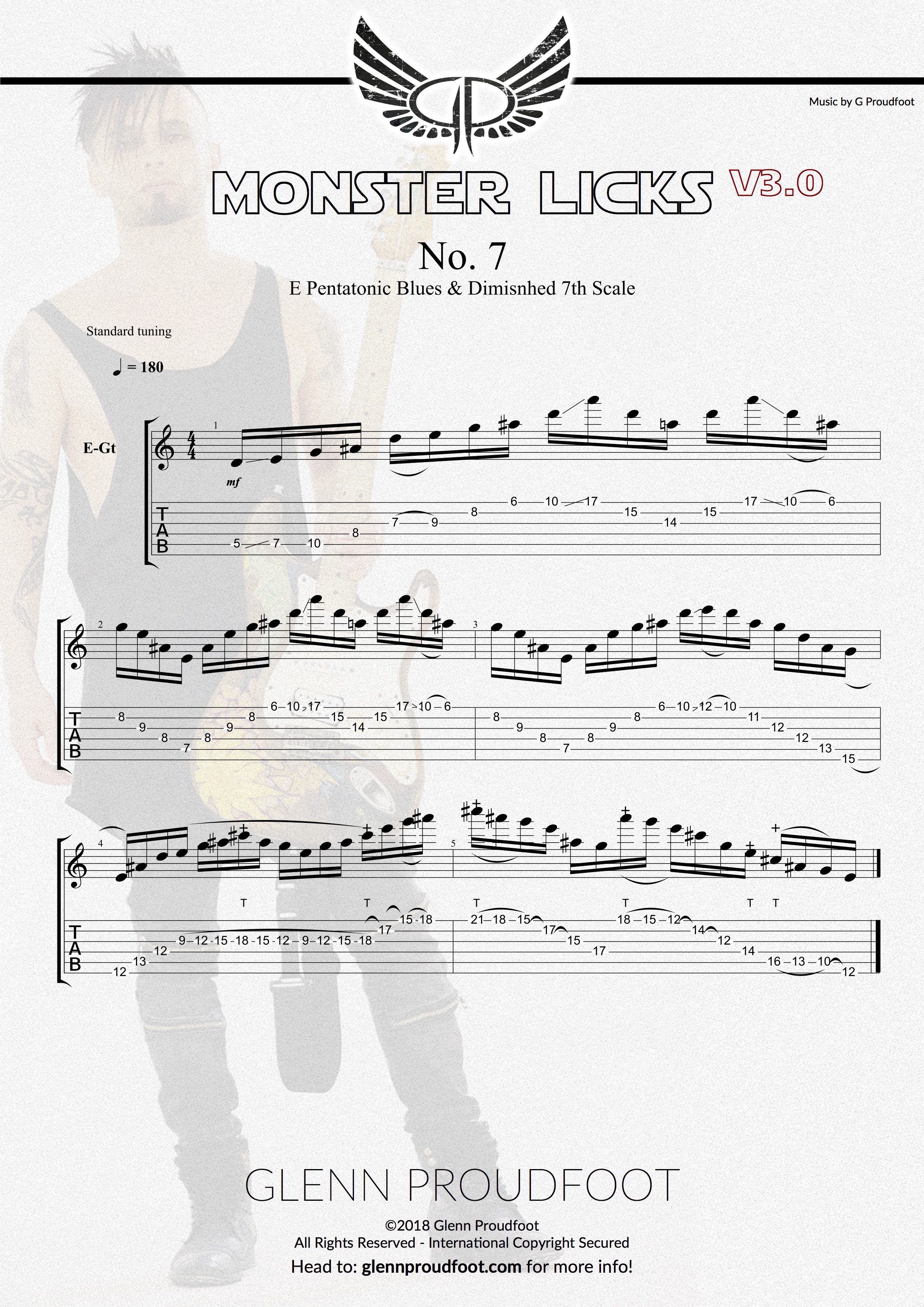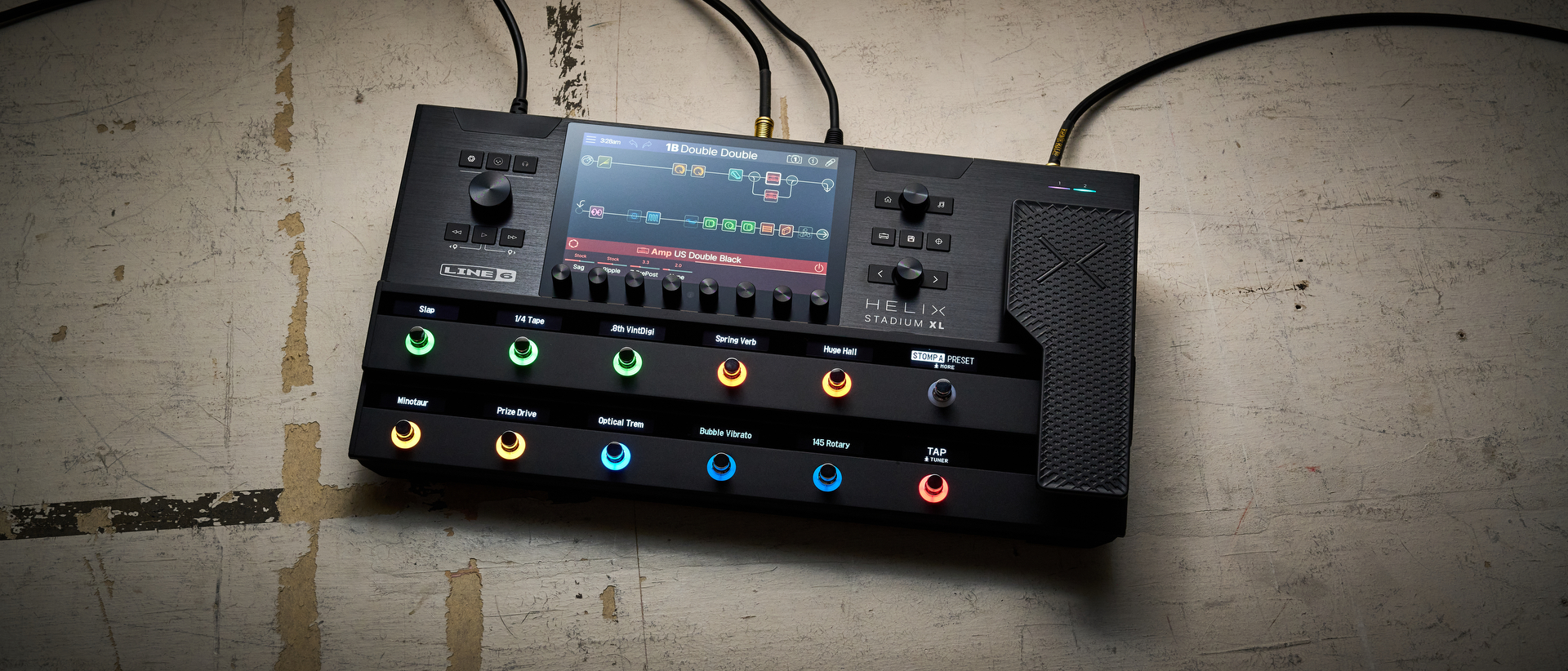Want to shake up your solos? Try this minor pentatonic super scale on for size
Glenn Proudfoot takes your playing into another realm in his newest Monster Licks lesson
In this lick, I’m using the E pentatonic blues scale and the diminished 7th scale or arpeggio.
The notes in the E minor blues scale (or E flat 5 pentatonic) are:
E, G, A, Bb, B, D, (E)
The notes in the diminished 7th arpeggio (or diminished scale) are:
E, G, Bb, C#, (E)
You can see that the only differences here are the omission of the A and the B and the added note C#, which is the major 6th.
These scales cross over very well as the major 6th note, which appears in the diminished 7th scale, is also very commonly used in the pentatonic scale, so tonally there are no surprises here. What is essential though, is the order of the notes.
All the latest guitar news, interviews, lessons, reviews, deals and more, direct to your inbox!
It's always very important to remember that even though there are huge similarities with these scales, we must understand them individually. This is what creates the tonal difference and gives shape and color to your playing.
What I'm doing in the first part of this lick is accenting the flat 5 rather than using it as a passing note. This creates a very intense sound. It’s a great thing to have in your arsenal if you want to have the ability to get a little darker with the pentatonic scale.
Adding these scales together and creating one super scale is something that should be experimented with, but you should never lose sight of the individual scale. If you wanted to add them together you can view the scale as the E minor pentatonic flat 5 added major 6th.
The lick

I start this lick with an E minor flat 5 arpeggio. One of my favorite shapes, the E minor flat 5 arpeggio flows very nicely under the fingers.
Once I play the arpeggio through I slide up to the 17th fret and play a three-string arpeggio, then move back into the original position and play the five-string arpeggio back to the starting position. This whole process repeats twice.
On the third time through I play the arpeggio once more but then slide to the 12th fret and play a different inversion of the same arpeggio, this time on all six strings.
From there we move into the diminished section. This is where I bring into play my right hand to tap notes. This section is a little tricky, but remember that the diminished 7th scale is linear, so the shapes are always the same. You simply have to move the scale up in minor thirds.
This is one of the beautiful things about incorporating the diminished 7th scale into your playing. Once you nail the shapes in one position you basically have the whole fretboard covered as the patterns always repeat in minor thirds!
Follow Glenn Proudfoot on YouTube, Instagram, Facebook or visit his website, glennproudfoot.com.
